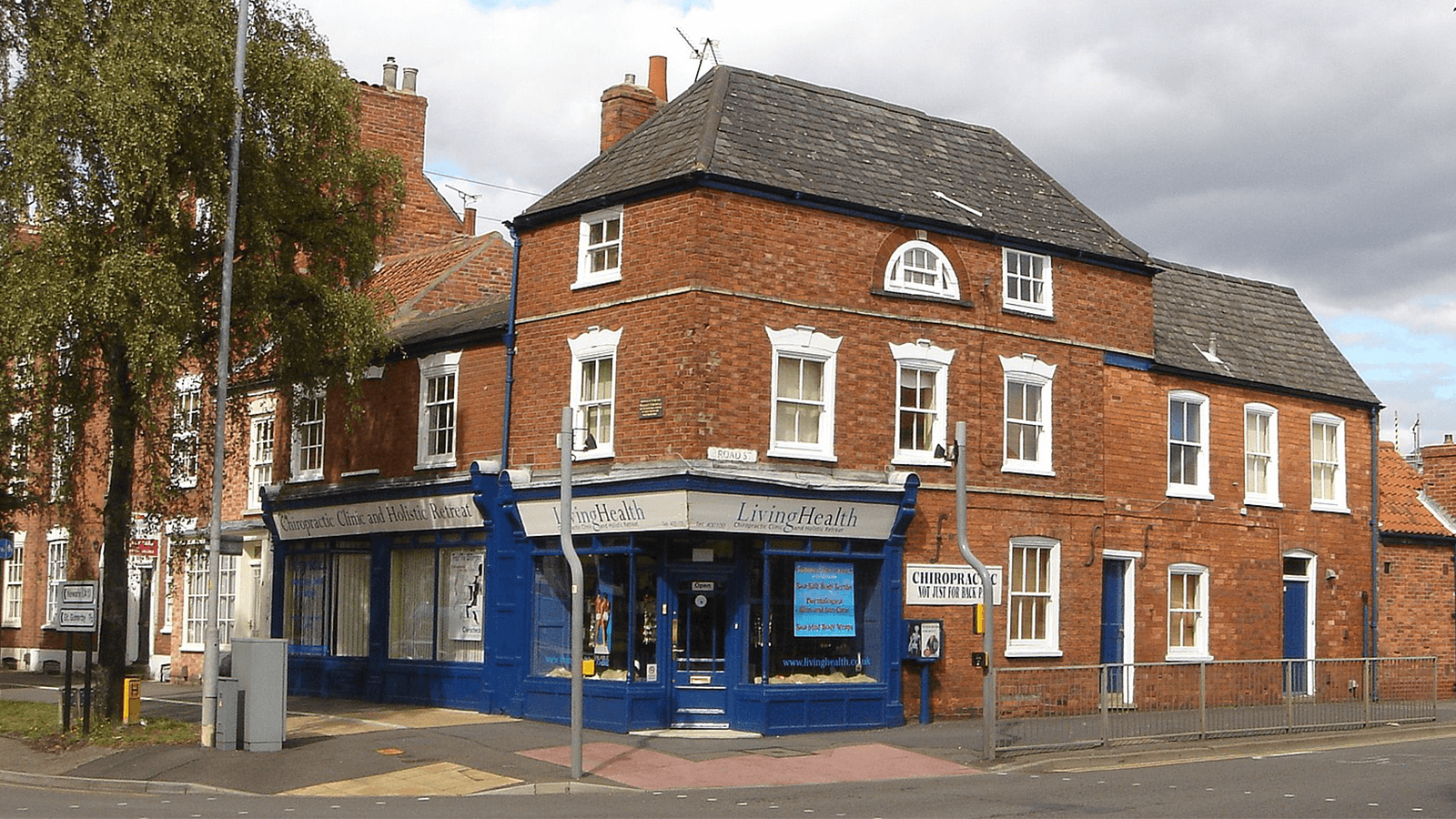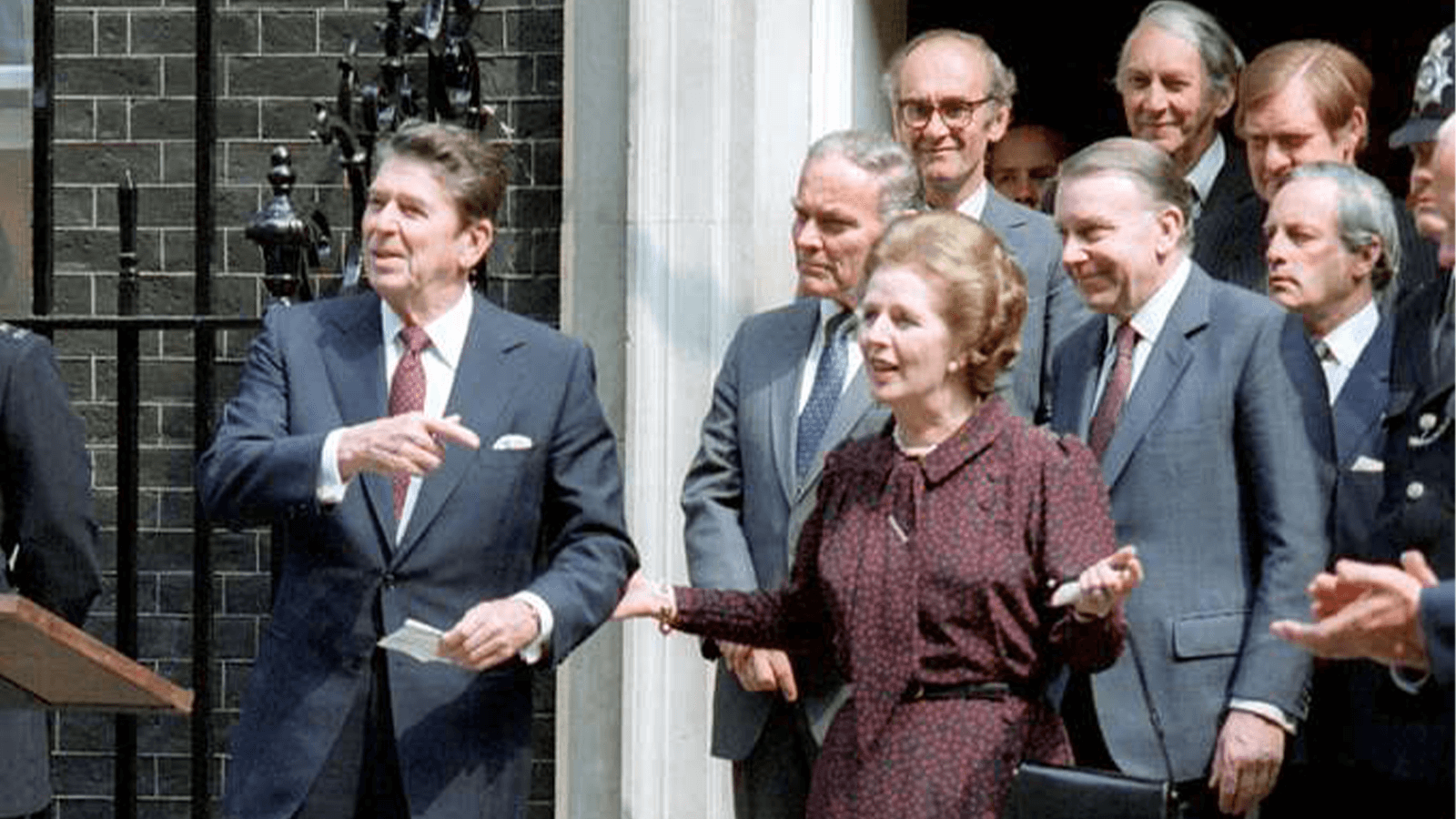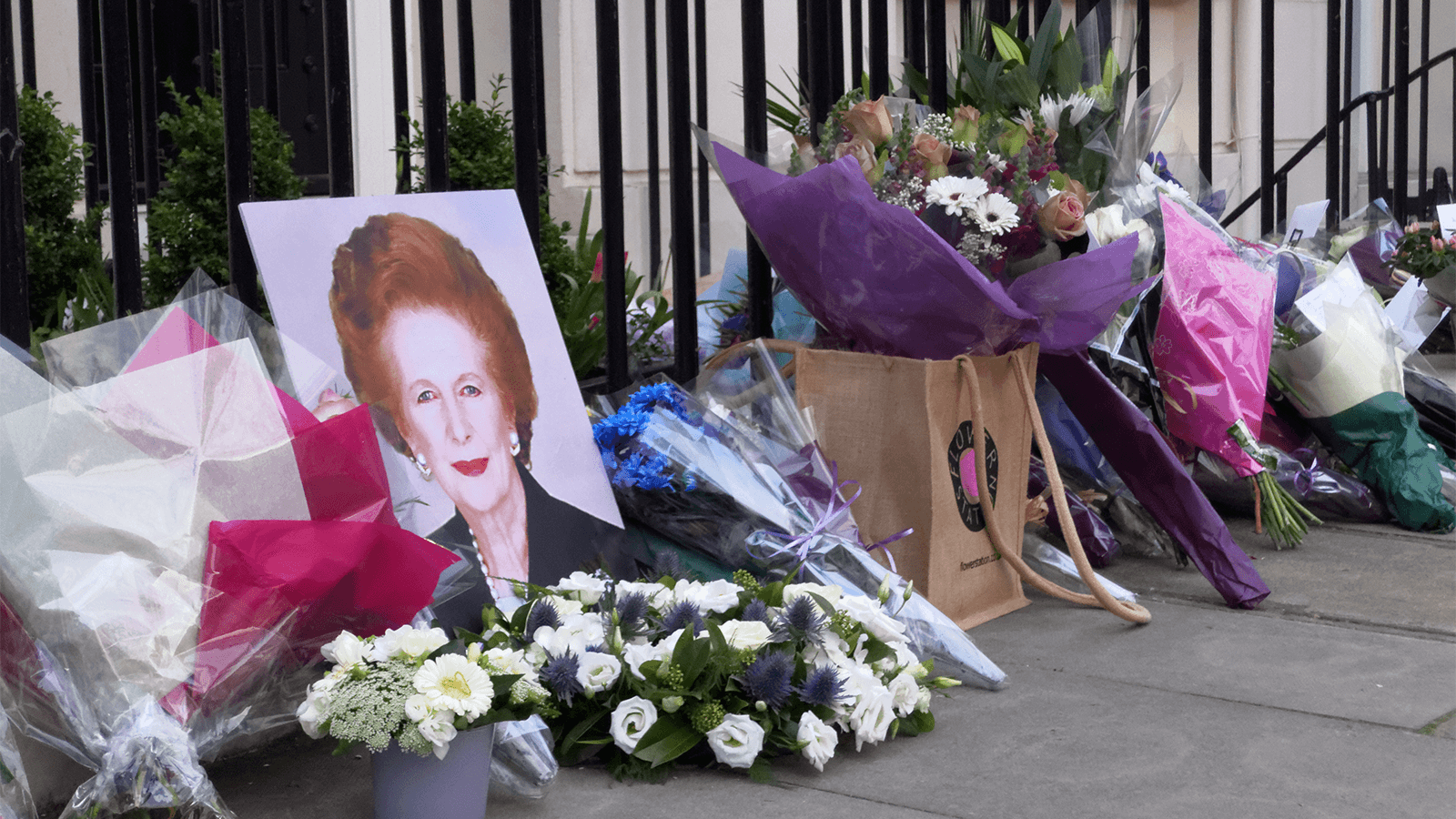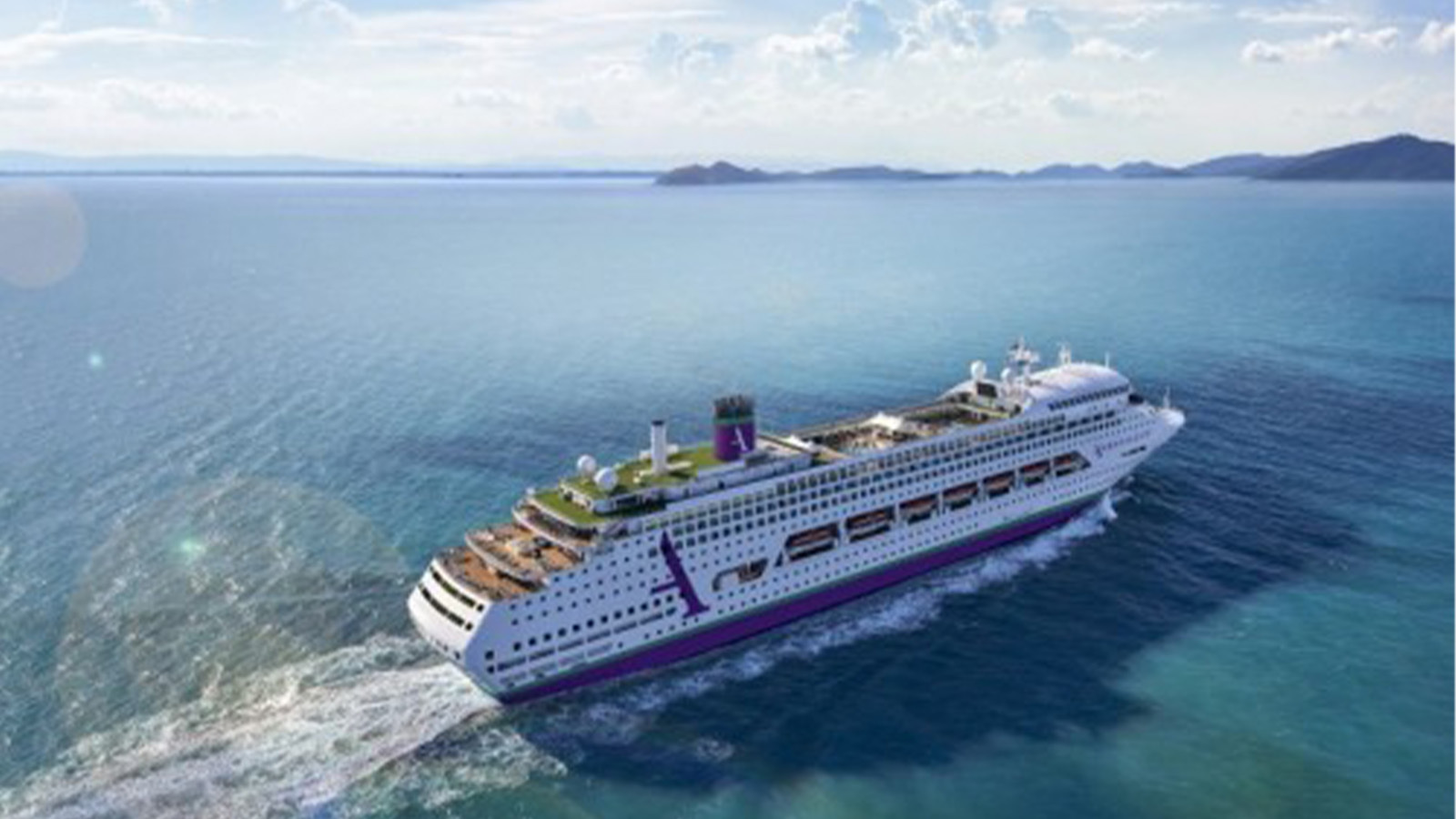
Godmother profile: Lady Margaret Thatcher
She divided the nation and set the tone for Britain’s current conundrums, but former prime minister Margaret Thatcher’s victories and cultural influence cannot be denied. As a beacon of success and Britishness, it’s no wonder that the cruise industry came knocking
Of all the historic names destined to polarise a nation, Margaret Thatcher offers the fiery potential of a permed nuclear device. Very few were afforded the luxury of indifference during her 11-year tenure as Prime Minister of the United Kingdom; either you swam in profit – courtesy of a yuppie new-money approach – or straddled the breadline as a promptly discarded relic of old industry.
Historians exhibit Thatcher's efforts to whip British economies back into shape, with restored indicators of global influence and power. Others flaunt a different side of the coin, where the Iron Lady instigated a biblical amount of unwarranted suffering upon those from working-class and Northern backgrounds.
This is the leader who charged the taxpayer for 118 hair appointments in 12 months and slashed council budgets, while quietly plotting to draft in the army to quash the miner’s strike.
This is the woman who abolished free milk for schoolchildren, while presiding over 15 per cent interest rates. This is the Prime Minister who planted the seeds of NHS Privatisation while spearheading the homophobic Section 28.
Yet, Thatcher was also the woman who helped bring an end to the Cold War. She led Britain to victory during conflict over the Falkland Islands, during which she wrote personal letters of condolence to each bereaved British family.
The Iron Lady brought foreign investment to British shores, often spending years building trust with other nations by learning their traditions, and curbed the Trade Union’s stranglehold on the country. She arguably saved us from ourselves, while playing mother.
However you view the tenure of Thatcher’s governmental orchestration, there is no denying that the Lady herself was strong, dignified and forthright. She was hugely successful in her chosen political craft, changing the foundations of history and planting the flag for female empowerment and independence.
On paper, the Iron Lady provides a decadent blueprint for victory. Businesses fell over themselves to acquire her talents once she left Downing Street.
To be associated with the strongest leader in a generation was far from detrimental, and besides taking up a Geopolitical consultancy role with an American Tobacco firm and residing as Chancellor of the private University of Buckingham, the cruise industry came knocking in 1991.
Thatcher remains one of the most prominent Godmothers ever appointed, and her ship is still out there – albeit under a different guise.

Margaret Thatcher: A British love/hate relationship
Summoning a debate regarding Thatcher’s legacy entices terms such as ‘mass unemployment’, ‘privatisation’, and ‘debt culture’, whereas others will bring ‘Northern Ireland’ to the party. Except, it’s easy to focus on Thatcher as a lampooned culture attaché and overlook the impressive resolves that she spearheaded.
Try to make the facts fit your critical narrative all you like, but the fact of the matter is this: she was the only Brit capable of governing throughout a decade where Cold War mentality haunted us.
From the economy to women's fashion, no politician has provided such a far-reaching influence on our social landscape. Thatcher was the steely director of eighties Britain, a time that set the foundations for our current age.
Each subsequent Conservative prime minister has tried to emulate her mantra, and failed miserably. Yet, it’s also easy to get carried away by the showcased positives of her premiership, and praise her efforts when looking back on bygone days of rose-tinted nostalgia. It's not as simple as that.
Historians and contemporary media may portray the former PM as the hero of the hour, but things felt very different for most families. While Duran Duran ruled the airwaves and Bouffant hairstyles stalked the land, protests over Thatcher's policies raged on.

Should you delve into the rich culture of Thatcher’s Britain in search of then-public opinion, the general attitude can ultimately be summarised by radio DJ Kenny Everett’s opening monologue on BBC Radio 2:
“When England was a kingdom, we had a king. When we were an empire, we had an emperor. Now we're a country, and we have Margaret Thatcher”.Vast swathes of the country quickly boiled with Thatcher-sponsored rage. Conversely, around the same time, the national respect and affection for the Iron Lady led to a humourful plot device in For Your Eyes Only – Roger Moore’s fifth cinematic 007 adventure.
Not to mention a well-received turn at penning a live-action sketch for the critically acclaimed sitcom Yes, Prime Minister.
Then there was the satirical puppet show Spitting Image, with comedy careers launched upon the ridicule of Thatcher’s unquestionably strong and unwavering persona. Certain sketches were unbelievably cutting, bordering on personal attack, and Thatcher was reportedly not a fan.
While lesser mortals would have folded because of such societal parody, Margaret never wavered. Courtesy of her policies and successful career, she garnered love and hate in almost equal measure – creating the bedrock upon which 1980s culture became forged.
Then there's a plot twist. The Iron Lady was undoubtedly an easy target, but that wasn’t purely down to her actions for pushing forward. Some suggest that she merely highlighted the divisions already installed in society at that time, before enflaming the situation with her virtues and 'solutions'.
She offered a mirrored reflection of ourselves, and we didn’t fully appreciate the image we encountered.
Thatcher therefore bore the brunt of everyone’s anger and apprehension. She was the figurehead who absorbed the angst and anxieties of personal progress and succeeding panic – and she was strong enough to take the bull by the horns.
Grantham born and bred
Born in Grantham on October 13, 1925, to Alfred Roberts and Beatrice Ethel Stephenson, Margaret spent her childhood in a ground-floor flat where her father owned a tobacconist’s and grocery shop.
Alfred would later serve as Mayor of Grantham from 1945 to 1946, before losing a subsequent position of Alderman – thanks largely to the Labour Party. Margaret's seeds of opposition had clearly been sown.
From a strict Wesleyan Methodist background, and with Irish ancestry, the future PM took a ‘no nonsense’ approach to everything.
Even when attending the Finkin Street Methodist Church as an adolescent, she expressed an inability to believe in angels as ‘they would need a breastbone six-feet long to support their wings’, and that was – frankly – quite impossible.
This same forthright attitude had seen Margaret, alongside her elder sister Muriel, saving their pocket money to help pay for a teenage Jewish girl’s escape from Nazi Germany, prior to the outbreak of WWII.

Seeking an Oxford education, Margaret graduated in 1947 with a degree in chemistry, specialising in X-ray crystallography, followed by a Master of Arts degree in 1950.
Her fixation on science soon played second fiddle to an interest in politics and law, although her scientific fascination never faded. She was, reportedly, prouder of becoming the first PM with a science degree than her status as the first female Prime Minister.
Throughout her Oxford days, Margaret was noted for her serious and isolated attitude towards general subjects. Her first romantic partner – Tony Bray (1926-2014) – claimed that she stood out as “unusual” but “very thoughtful and a very good conversationalist”.
As with any post-university dream, Margaret’s path didn’t initially start with the pack, instead moving to Colchester, Essex, for employment as a research chemist for BX Plastics. She later applied for a position at Imperial Chemical Industries (ICI), but was turned away for being “headstrong, obstinate and dangerously self-opinionated.”
A career in politics clearly beckoned, with an understanding of scientific research heavily impacting her views when strolling through the door of Downing Street.

Political genesis: The woman who defined Britain
Thatcher’s political genesis can be traced back to joining the local Conservative Association and attending the 1948 party conference in Llandudno, Wales. Following a dinner to celebrate her formal adoption as Conservative candidate for Dartford in February 1949, she met divorcé Denis Thatcher; a wealthy businessman.
After their first encounter – where Denis drove Margaret to catch her Essex train – she described him to Muriel as "not a very attractive creature – very reserved but quite nice." It was clearly love at first sight, and they would marry in 1951.
Denis would become the epitome of society’s ‘Champagne Charlie’, despite residing as an acute business expert and financing his wife’s studies for the bar – where she qualified as a barrister in 1953; specialising in taxation. We’ll let you make the puns for that one.
To prepare for the Dartford election, Margaret moved to the area where she supported herself with employment as a research chemist for J. Lyons and Co. in Hammersmith.
It was here that urban legend stemmed regarding Thatcher’s claim over the invention of ice cream. In reality, she was part of the team developing emulsifiers for frozen dairy goods. Some say her icy glare helped to quicken the process.
Of course, nobody gets an easy start, and Thatcher’s first attempts to enter a Parliamentary seat did not meet with success. A fellow candidate – Bill Deedes (1913 – 2007) – declared that: "Once she opened her mouth, the rest of us began to look rather second-rate”, but that didn’t translate to votes.
Losing opportunities during 1950, 1951 and 1954, she didn’t lose heart. Having reduced the Labour seat majority by a considerable margin, the ultimate achievement was still feasible. With the arrival of her twins in 1953, Thatcher decided not to stand as a candidate in the 1955 general election, but it wasn’t long before election victory.
A hard campaign during the 1959 election resulted in Thatcher's MP status for Finchley. Britain was in for a shock. Following stints as Education Secretary and edging her way up the political ladder, Thatcher took the reins of the Conservative Party and led them to victory during the 1979 general election.
As a new, and feverishly turbulent decade took hold, the Iron Lady inherited a legacy of socialist state planning and devastating taxation. As time would tell, her plan to restore Britain’s international competitiveness would incur the maximum political odium for the minimum political benefit.

Britain in the eighties. Thatcher’s Playground.
When looking at the neon-decade of excess, it’s hard to picture the ashes from which the 1980s found footing. The previous political agenda had enthralled Trade Union leaders and the country had been subjected to strike action and communistic-industrial turmoil on a daily basis.
Families and businesses were largely paralysed by the crawling shadow of Great British defeatism and negativity. Britain shouldered the failed legacy of preceding PM Callaghan’s IMF loan, languishing on the global stage as a laughingstock.
Media such as The Sweeney and The Long Good Friday were presented as documentaries on the grim British reality to overseas patrons, rather than fictional tales of crime.
Thatcher argued for a new kind of Britain. The gritty aspects of waste-ground Albion were to be replaced by glitzy steel and profit-driven enterprise, even if that entailed making extremely unpopular decisions with the proletariat.
The gravitas and political dynamics of day-to-day Britain were to change our identity – indeed, the New Labourites spearheaded by Tony Blair concluded that a Thatcherite approach to economic activity and the private sector remained paramount to modern success.
Her policies were aimed firmly at cutting tax and empowering the individual. You should have the right to buy your own council home. You should have the right to benefit from privatisation. You should have the right to independent broadcasting.
Largely because Thatcher fought her battles with the singlehanded intensity of a hardened squadron, trumped the arguments and settled her debates with trademark cool yet matron-like regality, she gained status as an inspiration for other countries.
A sudden transformation occurred, moving Britain out of the doldrums and back into the giddy heights of global power.

If the previous decade had been defined by unions, then her decade would be symbolised by reductions in union power and a booming economy of enterprise and wealth. The problem was, that wealth and success were not evenly distributed.
Hardly the fault of Thatcher as a person, granted, as unceremonious yuppie behaviour of the up-and-coming elite was down to the individual at the centre of their selfish universe. Sadly, this kind of profitable endeavour to keep Champagne Charlies in bed with Lady Luck became a symbol of Thatcher's campaign.
As the 1980s tore forward, the ever-widening gap between the ‘have’ and the ‘have nots’ turned into a class-dividing abyss. What had started as an economic rescue mission soon dissolved into a self-destructive attitude, where parliamentary mind and matter could not be swayed by rational attitudes towards those without double-barrelled surnames, Range Rovers or title deeds.
By the time November 1990 rolled in, public and internal attitudes towards Thatcher had soured beyond redemption. Her policies had created outrage, with an inability to change a now infamous cut-throat mantra signalling the end of her tenure at Downing Street.
Cast out by her own party and relegated to the back benches, the country tried in vain to move beyond Thatcher's reign, yet the Iron Lady’s influence over politics still lingers to this day.

A legacy divided. A success in her own right
Protests over the enforced Scottish Poll Tax, controversy over the Falklands War and the Irish hunger strikes, alongside the devastation caused to rural communities by often – unsubstantiated policies, casts the former PM as an inharmonious historical figure.
As such, it will be a cold day in hell before the punished generation of Great Britain bestows universal praise upon Baroness Margaret Thatcher, even if the societal issues of the UK did not originate with the Iron Lady herself.
Others lament the loss of, arguably, Britain’s greatest leader. Regardless of which side of the fence you sit on, one aspect is undeniable – Thatcher changed the course of European history. That’s a feat accomplished by a very small band of warriors, and an achievement largely smothered by consistent debate over her legacy.
When newspapers scrambled for headlines following Thatcher’s death on April 8, 2013, the conflicting public approach to her legacy found footing with a new generation. Certain areas of the country revelled in Thatcher’s passing, whereas more respectful individuals paid their respects – regardless of personal conflict or opinion.

As a person, she was the absolute epitome of Britishness. As a Prime Minister, she resided over a changing nation and firebombed any notion of a failing economy. She won three landslide elections and dominated the global stage as a beacon of stoic prosperity; a celebrity in her own right.
This was the woman who reduced the legendary David Frost to a nervous wreck. This was the woman who bought Marks & Spencer's underwear. This is the woman who raised twins and kept her family together. She was human, and has gone down in history as a remarkable individual.
It was for these aspects, and an ability for no-nonsense yet characterful decision-making, that CEOs came armed with financial offers for Thatcher’s time and wisdom. One of those firms happened to have a new cruise ship that coincidentally required a godmother, and Thatcher gladly accepted.

Regal Princess
We doubt many of you will remember the Sitmar Cruises brand. Not because they were insignificant or useless, but because P&O Cruises bought them out during the summer of 1988.
Having started an ambitious new programme for the North American cruise market in 1985, and aborting efforts to acquire construction slots from Italy-based Fincantieri, Sitmar placed an order with the legendary Chantiers de l'Atlantique shipyard in France for a new cruise liner.
This upset the Italian government somewhat, as the proud dignitaries were keen to have ships built by Italian yards. After many conversations and promises, Sitmar then placed two orders for a pair of 70,000 GT cruise ships, set for delivery in 1990 and 1991.
During the early stages of construction, Sitmar Cruises was sold to the P&O Group, and the three unfinished Sitmar ships were transferred to the fleet of a P&O subsidiary – Princess Cruises.
Regal Princess, the second of the three new ships, was launched on March 29, 1990, and delivered to New York on July 20, 1991.
It was here, on August 8, 1991, that Margaret Thatcher strolled across the iconic dockside to officially christen the $280 million ship.
In a way, having the Iron Lady present on North American soil for the ceremony was hugely symbolic. Thatcher remained incredibly popular with Americans, fuelled by President Ronald Reagan’s fondness and admiration during her reign as Prime Minister, and she was just as fond of him.

Regal Princess was given a major refurbishment in 2000, taking over Princess Cruises’ Australian itineraries before being permanently transferred to the P&O Australian fleet in late 2007. Another extensive refurbishment then took place, with the ship’s name changing to Pacific Dawn; christened on November 8, 2007 by Olympic gold medalist Cathy Freeman.
Things turned messy after that, with the ship officially being retired by P&O. Except, rather than being assigned for scrap, the doomed Cruise & Maritime Voyages (CMV) – who intended to rename her MS Amy Johnson, after the first woman to fly solo from London to Australia – took her on.
CMV folded in July 2020 due to the catastrophic COVID impact on the tourism industry, leaving the ship’s fate uncertain. Another hopeful company purchased the cruise vessel with the intent of bringing her back to life, but the impossibility of securing insurance for the proposed operations in Panama ensured the project never went ahead.
Scrapping in Alang, India, looked certain by December 2020. Then another company reportedly stepped forward – Wake Asset Co, a single-ship British Virgin Islands company, for operation by an unnamed European cruise start-up. It was announced on May 13, 2021, that the new operator would be Ambassador Cruise Line; a British firm to be based at Tilbury, near London.
Renamed Ambiance and assigned former British athlete Sally Gunnell as her Godmother, Ambience is still making waves today. You can book yourself a snazzy cruise and explore the world, knowing that the vessel gained the approval of Britain’s hardest prime minister.











